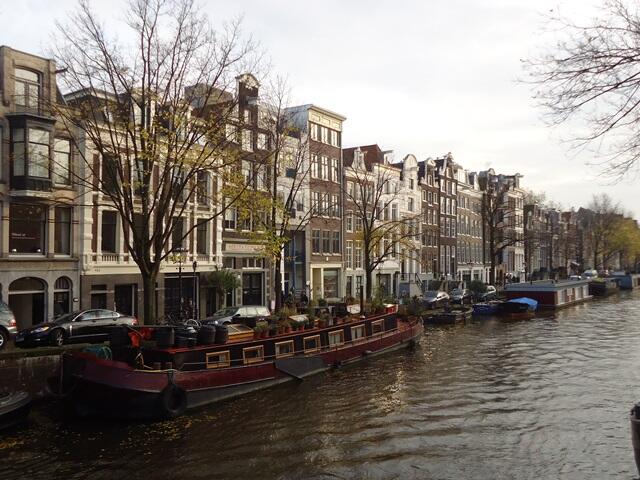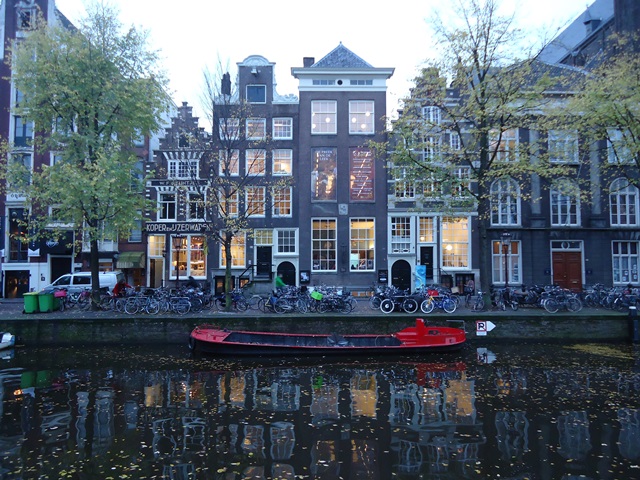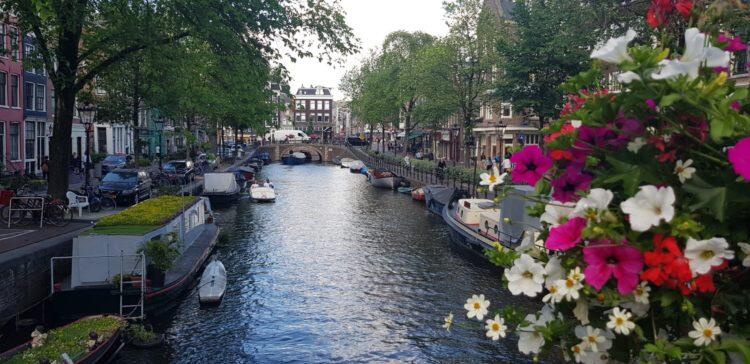The famous canals of Amsterdam can be divided into two equally awe-inspiring categories. Firstly, there are the actual waterways themselves. These are the sunken passages that snake their way through the city, which were painstakingly dug, filled, arched over by graceful bridges, and are a pleasure to laze upon on a boat or simply gaze at. The second striking characteristic that makes the canals here so special are the houses that line the waterways. Easily the most gorgeous buildings anywhere in the world, and crammed lovingly together, Amsterdam canal houses have a fascinating history hiding behind them.
Here is a little background as to why Amsterdam canal houses came to be built and how they came to look the way they do…

Amsterdam’s Golden Age
During the early part of the 1600s, Amsterdam was in the throes of its Golden Age, and the town was expanding faster than it could keep up. Amsterdam was running out of room, and something had to be done. Most of the reason Amsterdam was growing exponentially in population was because it was growing wealthier and wealthier by the day. You see, Amsterdam’s East and West India Companies were plying the waters of the world, engaging in exotic and very profitable trade; and that money was all coming back to Amsterdam.
The “Big 3” of Amsterdam Canals
Those governing the city at the time decided to expand it by building 3 massive canals around the town: the Herengracht (gentlemen’s canal), Keizersgracht (knights’ canal) and Prinsengracht (princes’ canal). These canals are home to the majority of the most impressive Amsterdam canal houses.
Once constructed, these new Amsterdam canal houses became the homes for an emerging merchant, artist, and political class, who wanted to show their new wealth off not only to each other but to the rest of the world. Due to the inherent space restrictions in place and a policy of taxing buildings by the width of their frontage, Amsterdam canal houses were built in a tall-and-skinny style that has made them the signature of the city to this day, but with touches that exude sophistication. The homes were ornately crowned with soaring gables to boldly pronounce their grandeur, and long sleek windows that provided further visual appeal.
The Herengracht became home to the most affluence, as it was the widest canal; even today a stroll down the Herengracht brings with it an almost imperial, mansion-like appearance and atmosphere.
Multi-tasking Canal Houses
These houses served as both homes and workplaces for many of the merchants, and you can still see evidence of this today in the fact that the basement floors of many canal houses include large doors used as entranceways to the shop or for storage. The workplace and storage for the merchants would be downstairs, while their residential quarters would be up a series of steps. The elevated steps helped to protect the residence from potential flooding.
On the whole, what makes Amsterdam canal houses so special is their combination of skinny profile, grand gables, and architectural quirkiness that you just simply aren’t going to see anywhere else in the world. Many of the houses also hide little alleyways and gardens behind them that add to the romance as well. Keep all this in mind next time you walk along our canals and you will be amazed at how much is still evident today.

See for Yourself
Want to get a great glimpse of what life was like behind the façade? Well, you can peer into the past at several spots along the canals.
The Museum of the Canals (Het Grachtenhuis) is a natural first stop as it is home to exhibits and interactive displays that give a detailed overview of everything from the construction of the canals to the homes that lined their banks.
Herengracht 386
020 421 1656
hetgrachtenhuis.nl
Open Tue – Sun 10 am – 5 pm
The Museum Van Loon, on the other hand, offers a fantastic slice of what life was like on the canals for the wealthiest and most influential citizens of the Amsterdam. This museum is located in the former home of the Van Loon family, whose patriarch Willem was an original founder of the Dutch East India Company. Stately rooms filled with precious art and antiques fill the main building, while a gorgeous garden lies behind it featuring a restored coach house.
Keizersgracht 672
020 624 5255
museumvanloon.nl
Open Wed – Mon 11 am – 5 pm
The Willet-Holthuysen Museum offers another opportunity to step gracefully back in time. This spot on the Herengracht feels like a Dutch Downton Abbey as it is home to gilded ballrooms, parlors, and a French-inspired garden that is worth the price of admission alone.
Herengracht 605
020 5231 822
willetholthuysen.nl
Open Mon – Fri 10 am – 5 pm; Sat and Sun 11 am – 5 pm





